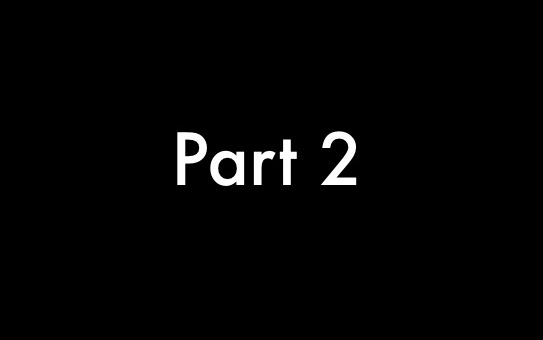Hello again! The focus of my writing for most of 2020 was career-defining experiences and the lessons learned from them. While that will still continue in 2021 I will also sprinkle some product-related conversations into the mix, like last week’s post. If those posts fall outside of your interests I apologize. This week we are going to go back to career conversations. We are going to talk about dry powder.
I mentioned in my “Twenty Lessons Learned in Twenty Years” that you should figure out what your limits are fairly early on in your career. As you also get older, those limits will change for the worse. There will be times when you will be asked to do unreasonable things in order to complete projects that are in crisis or perceived to be vital for business reasons.
This is a much more sensitive conversation than it was twenty years ago, or perhaps even ten years ago. There is a need to make sure that everyone respects established work-life boundaries, and if you are putting in extra time to complete urgent work, that there is some downtime taken in consideration. This is a wonderful thing for people with families and personal obligations to others.
You will encounter moments in your career when you will be asked to go above and beyond your normal duties, and there will be moments when you may counsel others to do the same. I will confess that early on in my career I jumped on as many critical projects as I could—I honestly would not advise this due to the multiple associated downsides. So over the years I have built myself an informal framework for evaluating urgent work. The first thing I decided to do was to figure out a cap for the amount of unreasonable work I would do in a given year. In order to communicate it better both to myself and to others I gave it a name. I referred to it as dry powder.
I attempted to google “dry powder” to help unearth its historical roots—all I found was contemporary finance references. Dry Powder stores come from the 17th or 18th century and the need to have available gunpowder for guns and cannons for war time. I find that to be a pretty accurate and amusing metaphor for software development.
So when should you use your dry powder? There are some obvious cases.
Meeting revenue numbers
Every product manager and project manager is nodding slowly at the hat tip I am giving them with this one. This is especially true at public companies. It is also exceedingly dangerous for the same reason. Companies make quarterly earnings statements and it can be really addicting to create overly ambitious plans for generating revenue, and expect the engineering team to make up for the gap between appetite and availability in order to generate business results. In the short term it is nice to go above and beyond to deliver a revenue win, however it is dangerous to do this repeatedly. I generally advise teams to do this at most twice in one year, and then it is time to have a conversation with leadership about planning. If it happens once a year at most, with a short duration, it is likely sustainable provided you get to share the rewards for the team’s success with the people who burned their dry powder.
Promotion hunting
Some companies have formal systems for acknowledging when it is time to promote somebody. It is worth taking on a more ambitious project than your role is scoped for, and burning some dry powder for it. This is especially true if you have had more than one year in your current role and based on other people’s feedback and comments, you are confident that you would be successful at the next level.
I would exercise some caution here in doing this too often. If you are taking on too much work like this it has some negative effects even if the project is successful. You can burn yourself out doing too many dry powder projects and it may also impact your primary responsibilities. When deciding on whether or not to burn dry powder on, I advise that you discuss it with your manager to determine if they can use that work to get you a promotion. It can be frustrating to do a bunch of extra work and then not get rewarded for it in the way you expected to be.
Compliance
I had the great fortune of working with a team of really talented engineers shipping a GDPR compliance feature for a large and successful product. This project had a very immutable deadline. I had to spend a significant amount of time talking with everyone on the team about its importance to the company, and to make sure we could get it live by the deadline. We had to spend a considerable amount of time working with leadership to communicate risks and request additional resources to ensure it was completed. This is a great use of dry powder.
Management changes
This one is tricky. I have been inside organizations when there have been leadership changes. I carefully measure dry powder allocation when there is a change in who I report to. If you are in a senior leadership position, you might already find yourself on a shot clock to be replaced by trusted people from your new leader’s previous organization, in which case nothing you do will make any difference for your long term career goals. While going through the process of getting to know my new boss or my new bosses’ boss, I take all of my dry powder evaluations to them to learn where they like to spend their dry powder. Quite often, you can pretty reliably predict what your new boss is going to do with you, and quite possibly your team, based on their replies. If they expect you to burn through all of your dry powder at every given opportunity, then they have little interest in you or your people—It is generally a good sign that your days are numbered and they want to extract as much value out of you as possible while gaslighting you on the way out the door.
Alternatively you may inherit new leadership who will listen to your conversations when you ask about whether or not you should burn dry powder, and will either give preferences or balanced pros and cons. When that happens and they ultimately say “you should make this decision yourself”, then you likely have a pretty good boss who is being helpful and supportive of letting you own your outcomes. It is too easy to be cynical and consider this to be some sort of trap. Half the time I assume that it is and just walk into it anyway. If I have that kind of boss I want to know sooner rather than later. It is worth burning some dry powder to determine whether or not your new boss has a long-term interest in having you around.
Are there other times you should burn dry powder? Absolutely. This is not an exhaustive list. It is an effort to give a few examples on when I choose to burn dry powder, and what filters I apply to make that decision.
Are there times you should not burn dry powder? Absolutely. Especially if that answer is “Every Friday fixing a release”. If you are in an organization that is burning your dry powder excessively then you should try to change that. Work with your management to figure out how to get well soon. If they are uncaring, or you are struggling to get to normalcy, then perhaps it is time to figure out some sort of team change or career change. It goes without saying that this is easier to do if you have some dry powder on hand!
You should always be able to have a conversation with your manager, your peers, and your subordinates about when to spend dry powder. Even if the outcome is not what you desire from that conversation, it will teach you something about the people and the company involved. You can also use that information to make very important decisions in your career and in your life.
If you are nervous about talking with your manager, your peers, or your subordinates about when to burn dry powder then you should ask yourself why. It is likely the fear that everyone will always be expected to burn all of their dry powder. I personally would not consider that to be a wonderful or sustainable work environment.
Thank you for reading along. If you have not thought about your dry powder reserves before now, I hope that you start to think about how you should manage them. I look forward to hearing from you, and to writing more things to think about for next week!








